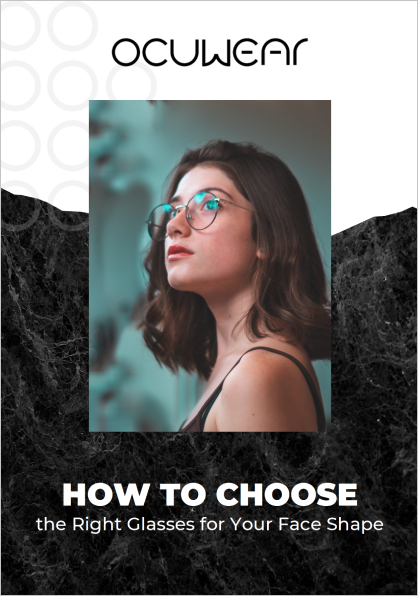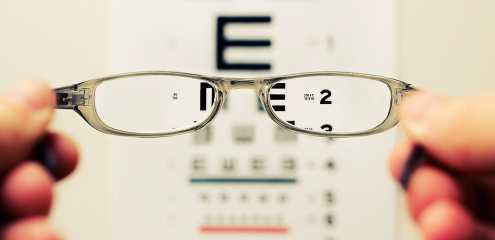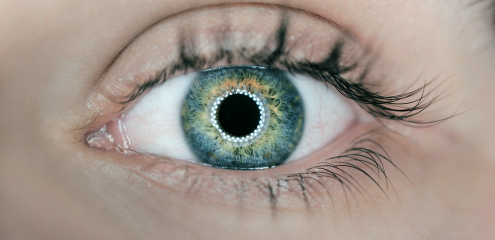Blog
Woodys Eyewear: Unique Frames for Completing Your Style

Ocuwear carries fashionable eyewear products for men, women and kids. Customers can easily browse our wide inventory that has been categorized into categories for “Eyeglasses” and “Sunglasses” as well as “New Arrivals” and “On Sale” for your convenience.
If the order needs to be changed due to a change of prescription from the doctor or an error in prescription input, please contact Ocuwear. We can modify your order within 90 days from the day the order was made. Our customer service team can fix your prescription as long as you reach out to us in a timely manner. Call or email us on our Contact Us page to let us know more details. Make sure to have the order number ready before contacting us.
All Ocuwear orders are accompanied by a tracking number that can be found in our confirmation emails. A tracking number is unique to each package, and lets you follow its progress throughout the delivery process.
Once the product has begun delivery, please go to the website for [delivery service]. By following website directions, you’ll be able to track your order.
We offer a 14-day exchange policy for non-prescription orders and products
At Ocuwear, we guarantee the quality of our products. If you are not satisfied with your purchase, please contact us for an exchange. We offer a 14-day return policy for non-prescription glasses. Sorry, no refunds available.
We offer free shipping to destinations across Canada with the purchase of any product over $200.
Free over $200
Across Canada
Processing times depend on the level of customization of each order. Frames could take a few days, while prescription orders may take up to 2 weeks. Delivery times vary depending on the courier.
Finding the ideal pair of eyeglasses takes time and patience. To accomplish this, you’ll need to determine your needs as well as your goals. Ask yourself:
● What are these glasses going to be used for?
● Which facial features do I want to highlight, and which do I want to de-emphasize?
● What kind of look do I want to achieve with these frames?
Ultimately, choosing eyewear is a personal choice, but you don’t have to do it alone. Ocuwear offers free consultations to customers located in the GTA. Schedule an appointment with our Vaughan-based sister brand Temkin Opticians to speak to one of our trained staff members.
If you don’t feel confident in your ability to choose eyewear, we can show you how! Learn how to find frames that cater to specific needs by reading our free e-book, How to Choose the Right Glasses for Your Face Shape, downloadable here.
If you’re still unsure about picking your own frames, why not let us choose for you? Take our Fit Recommendation Quiz, and receive a personalized list of recommendations based on answers you provide.
There are two straightforward ways to find measurements for your frame size. The first is to use a pair of old eyeglasses that you can use for comparison. If they fit well, copy down the measurements; if they could use some adjustment, think about which specifications need to change for a better fit.
Another way to determine your ideal frame size is to take the measurements yourself. In much the same way as taking measurements for clothing, measure your face to determine what size of frame you need.
While standing in front of a mirror, use a ruler to determine your ideal specifications for these important frame measurements (all in millimetres):
● Frame width: The furthest two points across the horizontal width of the frame including the parts that stick out
● Lens height: The vertical height of a lens at its tallest point; needs to exceed 30mm for bifocal/progressive prescriptions.
● Lens width: The horizontal width of the lenses at its widest point. Also known as “eye size,” lens width comes in three sizes (small: 50mm or less, medium: 51-54mm, and large: 55mm+).
● Bridge size: The part of the glasses that goes across the bridge of the nose, representing the distance between lenses; measured horizontally from the inner edge of one lens to the other.
● Temple length: The distance from the tip of the arms (after the bend in the ear) to the hinge of the glasses; because of the bend, it may be easier to do this measurement in two parts.
Some important things to keep in mind for each of these measurements:
● A good rule of thumb to use for frame width is to find a frame that is slightly wider than your face. Ideally, there should be no more than a finger's width of room between the temple and face.
● Be picky with your selection. Choose too narrow a frame, and it will make your face look wider; choose too wide, and it will make your face look narrow.
● Ideally, each of your eyes should be in the centre of each lens; if your frames are too wide, your eyes will appear too close together, while narrow frames will give your eyes a wide-set look.
Like other accessories or pieces of clothing, eyewear frames have different sizes. In the same way, the measurements of a piece of eyewear can be found printed as a code on the frames, usually either on its arms, or on the bridge of the glasses.
Frames for eyeglasses have three listed measurements, all of which are measured in millimetres (mm):
● Lens width: Usually 40-60mm
● Bridge width: Usually 14-24mm
● Temple length: Usually 120-150mm
The seven-digit measurement code usually can be understood this way:
● First pair of digits (Digits #1 and #2): Lens width
● Second pair of digits (Digits #3 and #4): Bridge width
● Last three digits (Digits #5, #6, and #7): Temple length (arm length)
Yes, frames are available for sale without lenses! People often use these types of eyewear as accessories, and may be lensless or come with non-prescription lenses. Neither of these options will impact your vision; only by using improper prescription lenses can a pair of glasses harm your vision.
Ocuwear can make prescription lenses fitted to a pair of frames using a prescription from an optometrist. If you don’t have an optometrist and are in the GTA, you can arrange to see an optometrist at Temkin Opticians.
Prescriptions for corrective lenses can be easier to understand by following a few guidelines.
For one, Latin is used to differentiate your eyes on a glasses prescription. “OS” (Oculus Sinister) is used for the left eye, and “OD” (Oculus Dextrus) is used for the right, while “OU” (Oculus Uterque) is used for both.
Another takeaway from a prescription for eyeglasses is that the further away from zero your numbers are, the worse your eyesight is. A “plus” sign (“+”) in front of the number means you are farsighted, whereas a “minus” sign (“-”) shows you are nearsighted. The numbers used here represent diopters, the unit used to measure the correction (focusing power) of the lens your eye requires. Diopters are often shortened to simply "D."
If you notice “ADD” on your eye prescription, it means your vision correction requires magnifying lenses. “ADD” describes the magnifying power required for reading, bifocal, multifocal and progressive lenses, and shows the additional lens power needed to make it easier for you to read.
“Prism” indicates the amount of prismatic power required in your corrective lenses. This corrects the alignment of your eyes, and is used on an eye prescription to describe double vision. To this end: “BO,” “BI,” “BU,” and “BD” refer to “base out,” “base in,” “base up,” and “base down.” These terms explain where to position the prism on eyeglasses so that your double vision can be corrected.
What’s more, if you have astigmatism in your eyes, your prescription will have three additional numbers displayed in the format “S + C + Axis”:
● “S” or “SPH”: Refers to the "spherical" portion of the prescription, which is your degree of nearsightedness or farsightedness. It refers to the power of the lens prescribed for nearsighted or farsighted vision.
● “C” or "Cylinder": Meaning that the higher the number, the more football-shaped your eye is.
● “Axis”: Reveals the orientation of the astigmatism, and is usually a number between 1 and 180. It indicates exactly where the astigmatism appears in your eye.
“PD” stands for “pupillary distance,” and it represents the distance from the centre of one pupil to the other. Measured in millimetres, PD indicates where the optical centre of your lenses should be placed, and is an important part of your prescription.
● “Monocular PD” is the distance from one pupil to the centre of your nose.
● “Binocular PD” is the distance between one pupil and the other pupil.
You can measure your PD by standing in front of a mirror and using a small ruler. Close your right eye, and place the beginning of the ruler in front of the centre of your left pupil. Then close your left eye, open your right eye, and read the measurement that lines up with the centre of your right pupil.
Conversely, if you don’t want to put rulers next to your eyes, find a pair of old glasses. Put them on, and use a non-permanent marker to mark the centre of each eye when looking in the mirror. Take the glasses off, and then measure the distance between the dots to find your PD.
Please contact us as soon as possible. Call us or send us an email with detailed info, and we’ll get back to you within 24 hours.
Find your perfect pair of glasses by learning how to match frames with the unique shape of your shape. Discover how to find your face shape and purchase the right frames by reading our e-book, How to Choose the Right Glasses for Your Face Shape!
Download Now
Find out everything you need to know when making an eyewear purchase for your children in this guide.
read more
Do you know if you have coverage for eye examinations? Follow this checklist to find out.
read more
Follow this guide to take the mystery out of the care and maintenance of using contact lenses.
read more